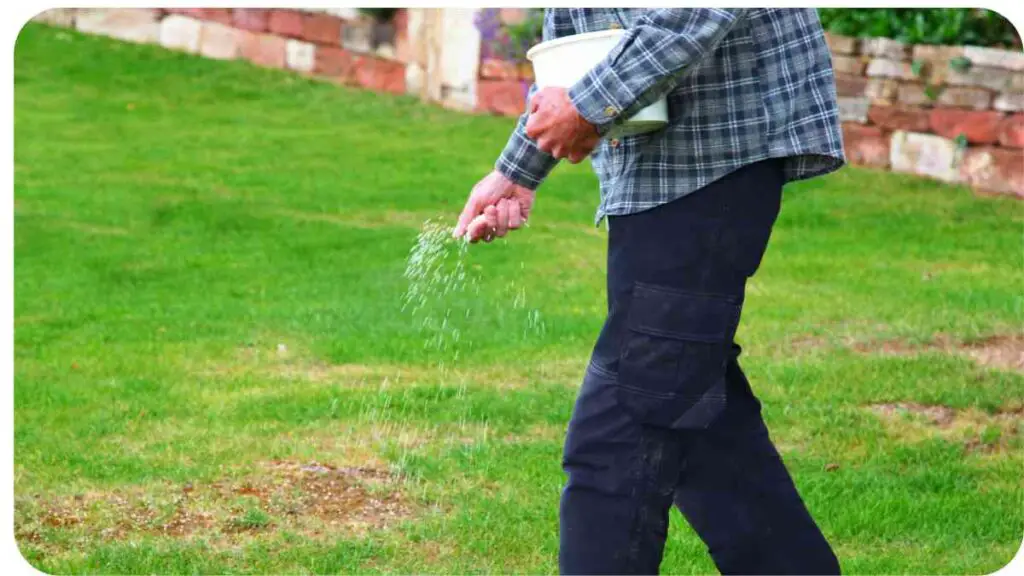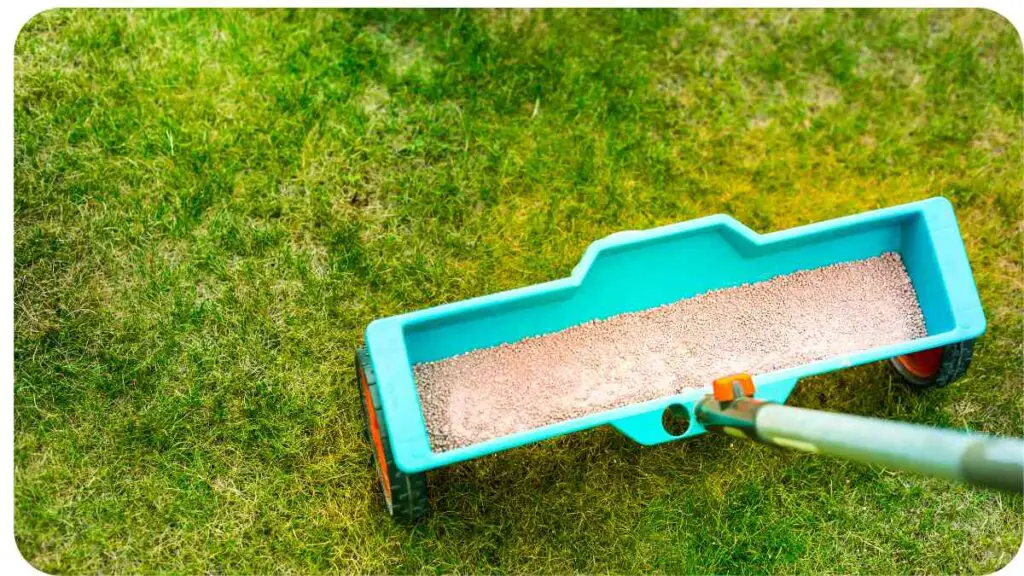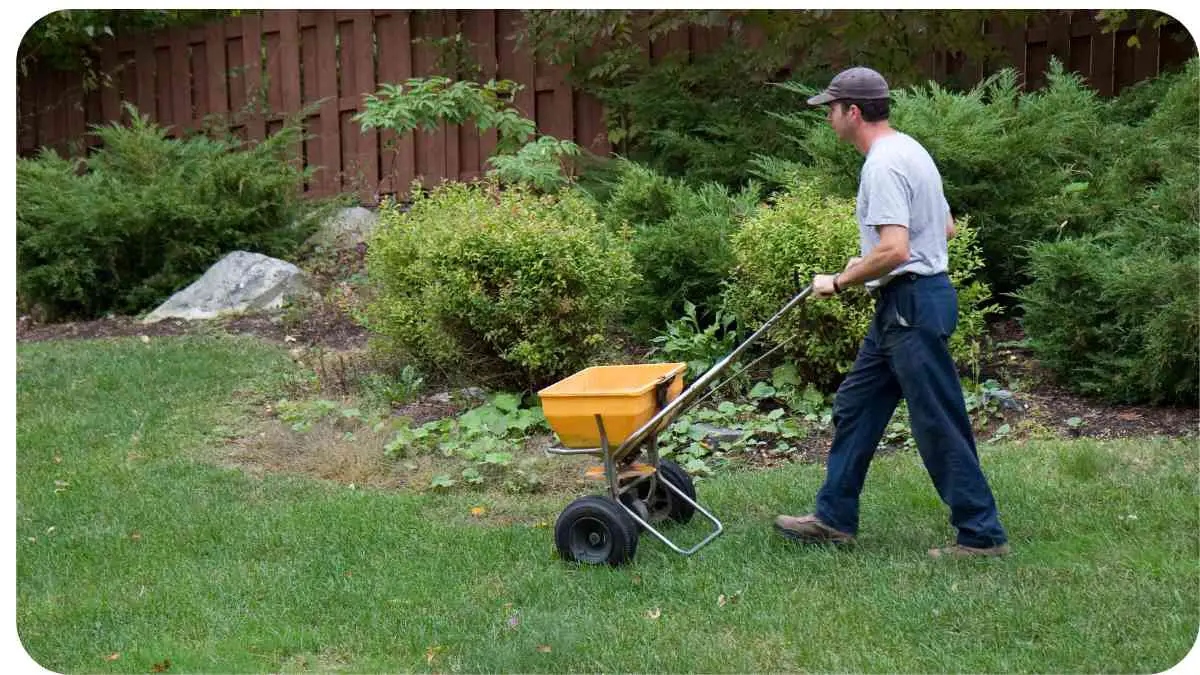We’ve all been there an overzealous application of fertilizer can quickly turn a lush, green lawn into a brown, crispy mess. It’s a common mistake that many homeowners face. But don’t worry, fixing burnt grass from too much fertilizer is possible with the right approach.
In this guide, I’ll walk you through everything you need to know to restore your lawn to its former glory. Whether you’re dealing with a minor issue or a major burn, we’ve got you covered!
| Takeaway |
|---|
| Fix burnt grass by thoroughly watering the area to dilute excess fertilizer. |
| Remove visible fertilizer granules from the surface to reduce further damage. |
| Adjust your fertilizer routine to avoid over-application and use a spreader for even distribution. |
| Incorporate soil amendments like compost to improve soil health and aid in recovery. |
| Choose slow-release fertilizers to prevent future fertilizer burn and ensure balanced nutrient delivery. |
| Regularly conduct soil tests to tailor your fertilizer application to your lawn’s specific needs. |
| Follow expert advice and guidelines to maintain a healthy and lush lawn while preventing fertilizer burn. |
Understanding the Problem
What Causes Burnt Grass?
Burnt grass is primarily caused by an excessive application of fertilizer, especially those high in nitrogen. When too much fertilizer is applied, it overwhelms the grass with nutrients that it can’t absorb quickly enough, leading to a build-up of salts in the soil. This excess can dehydrate the grass, causing it to turn brown and wilt. Imagine it like feeding your pet too much food at once overloading them can lead to discomfort and problems.
Proper fertilization is key to a lush, healthy lawn. To avoid issues like burnt grass, it’s essential to know how often to use liquid fertilizer on your lawn. Understanding the correct application frequency can help maintain your lawn’s vibrancy without causing damage.
Signs of Fertilizer Burn

Identifying fertilizer burn can help you address the problem before it worsens. Look for these signs:
- Discolored Grass: Grass may turn yellow or brown.
- Burned Grass Edges: The edges of the grass blades may appear scorched.
- Wilting: Grass may look droopy or dry.
- Crumbly Soil: Soil may feel dry and crusty.
Here’s a quick table summarizing the signs:
| Sign | Description |
|---|---|
| Discolored Grass | Yellowing or browning of grass |
| Burned Grass Edges | Scorched edges on grass blades |
| Wilting | Droopy or dry appearance |
| Crumbly Soil | Dry and crusty soil surface |
Immediate Actions to Take
Watering Techniques
The first step in addressing fertilizer burn is to thoroughly water the affected area. This helps to dilute the excess fertilizer and flush it out of the soil. It’s like giving your lawn a much-needed drink after a long, hot day. Water generously, but avoid over-watering, which can lead to other issues like waterlogging.
After restoring burnt grass, maintaining its edges is important. Investing in the best battery-powered lawn edger can help keep your lawn neat and well-defined. This tool is essential for maintaining a polished look after your grass has recovered.
Removing Excess Fertilizer
If you can see granules of fertilizer on the surface, gently rake them away. This can help reduce further damage. Think of it as cleaning up a spill before it spreads too much.
Long-Term Recovery Strategies
Adjusting Your Fertilizer Routine
Moving forward, it’s essential to adjust how you apply fertilizer. Follow recommended guidelines for the amount and frequency to avoid future issues. Sometimes less is more applying smaller amounts more frequently can be more effective and safer for your lawn.
If your lawn has suffered from over-fertilization, the next step is to learn the best way to green up your lawn. By implementing the right strategies, you can restore your grass to its former lush, green state efficiently and effectively.
Using Soil Amendments
Adding soil amendments like compost or organic matter can help improve soil health and aid in the recovery of burnt grass. These amendments help balance soil nutrients and improve water retention. It’s like giving your lawn a nutrient boost to get it back on track.
Here’s a table with common soil amendments and their benefits:
| Soil Amendment | Benefits |
|---|---|
| Compost | Improves soil structure and fertility |
| Peat Moss | Enhances moisture retention |
| Lime | Balances soil pH |
Preventing Future Fertilizer Burn

Proper Fertilizer Application
To prevent future burns, always follow the manufacturer’s instructions for fertilizer application. Use a spreader for even distribution and avoid applying on windy days to prevent drift.
Over-fertilization can weaken your grass, making it susceptible to pests. When dealing with burnt grass, it’s crucial to identify and manage the bugs in your grass. A healthy lawn is less prone to insect infestations and more resilient to damage.
Choosing the Right Fertilizer
Opt for a balanced fertilizer with a lower concentration of nitrogen if you’re unsure. Look for slow-release fertilizers, which provide nutrients gradually, reducing the risk of burn.
Additional Tips and Tricks
Expert Advice
Experts like Dr. Jane Smith, a soil scientist, recommend conducting a soil test before applying fertilizer. This ensures you’re providing exactly what your lawn needs without overdoing it. Dr. Smith’s insights can save you from costly mistakes and help maintain a healthy lawn.
If lawn care becomes overwhelming, you might consider professional help. Knowing how to write up a proposal for lawn care ensures you communicate your needs effectively, securing the best services to revive and maintain your lawn’s health.
Common Mistakes to Avoid
Avoid these common pitfalls:
- Over-Fertilizing: More isn’t always better.
- Applying Fertilizer on Dry Grass: This can increase the risk of burn.
- Ignoring Soil Health: Healthy soil is crucial for nutrient uptake.
If your lawn has suffered from over-fertilization, the next step is to learn the best way to green up your lawn. By implementing the right strategies, you can restore your grass to its former lush, green state efficiently and effectively.
Conclusion
Fixing burnt grass from too much fertilizer might seem daunting, but with the right steps, your lawn can bounce back beautifully. By following the guidelines provided, you’ll not only repair the damage but also prevent future issues. Remember, a little care and knowledge go a long way in maintaining a healthy, green lawn.
Further Reading
How to Repair Grass Turning Yellow After Fertilizing
This article offers practical steps to address and repair yellowing grass caused by excessive fertilization. It provides a straightforward approach to diagnosing and fixing the problem effectively.
Fertilizer Burn Guide
MasterClass provides a comprehensive guide on understanding and preventing fertilizer burn. It includes tips on how to handle the damage and avoid future issues with fertilizer use.
How to Fix Fertilizer Burn on Lawn
This guide covers essential strategies for treating fertilizer burn on your lawn. It offers actionable advice on both immediate remedies and long-term prevention.
FAQs
What should I do immediately after noticing fertilizer burn on my lawn?
Water the affected area thoroughly to dilute the excess fertilizer and flush it out of the soil. This helps to reduce further damage and begins the recovery process.
How long will it take for burnt grass to recover?
Recovery time can vary depending on the severity of the burn and the lawn care measures you take. Generally, with proper care, your grass should start showing signs of improvement within a few weeks.
Can I use any type of fertilizer to avoid burn?
Opt for slow-release fertilizers with balanced nutrient ratios. These fertilizers provide nutrients gradually and are less likely to cause burn compared to fast-release types.
How often should I apply fertilizer to my lawn?
Follow the manufacturer’s guidelines for your specific fertilizer and consider the needs of your lawn. Typically, fertilizing 2-4 times a year is sufficient, but this can vary based on grass type and soil conditions.
Are there any soil tests I should perform before fertilizing?
Yes, conducting a soil test can help you understand the nutrient levels and pH of your soil. This information allows you to choose the right fertilizer and apply it in appropriate amounts, reducing the risk of burn.

For 15 years, Hellen James has worked in the gardening industry as an expert and landscape designer. During her career, she has worked for a variety of businesses that specialize in landscaping and gardening from small firms to large corporations.

